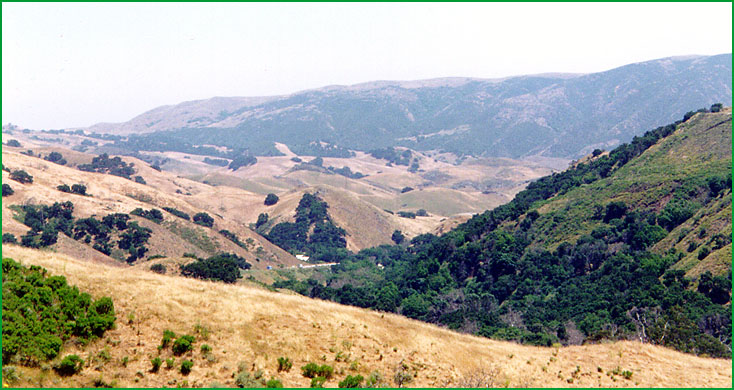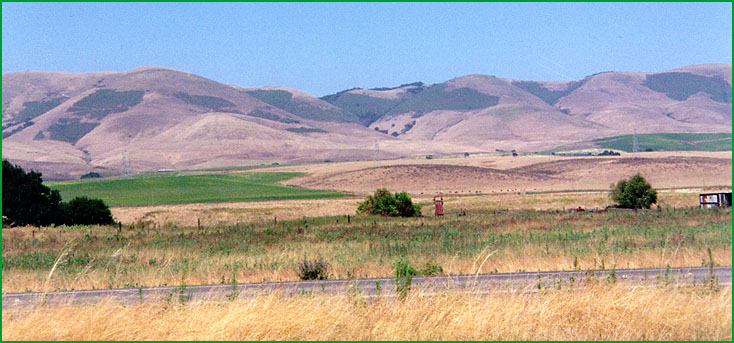 | Subsection l - Santa Maria Valley |
Crest Pass area between Santa Margaretia and San Luis Obispo Ś Patsy Miles |
Santa Maria Valley Ś Scott Miles |
http://www.fs.fed.us/r5/projects/ecoregions/261al.htm
This subsection is on alluvial plains along the Santa Maria River and on the Nipomo Mesa north of the river. It extends from the coast about 30 miles inland. The climate is hot and subhumid; it is modified greatly by marine influence. MLRA 14d.
Lithology and Stratigraphy. This subsection contains mostly Pleistocene nonmarine deposits and recent alluvium. Dune sand is common and there are some areas of Quaternary marine and Plio-Pleistocene nonmarine sediments.
Geomorphology. Most of the alluvial plain is nearly level floodplain and stream terraces. Dunes are fairly extensive behind beaches along the coast and sand has spread across the terraces. A remnant marine terrace is left behind Pismo Beach. The subsection elevation range is from sea-level up to about 800 feet. Fluvial and eolian erosion and deposition are the main geomorphic processes.
Soils. The soils are mostly Fluventic and Cumulic Haploxerolls on floodplains and Mollic Haploxeralfs, Pachic Argixerolls, Typic Haploxeralfs, Mollic Palexeralfs, Alfic Xeropsamments, and Haplic Durixeralfs on stream terraces. Typic Xeropsamments, Psammentic Haploxerolls, and Alfic Xeropsamments are the main soils on dunes. Most, but not all, of the soils are leached free of carbonates.
Silica has accumulated and cemented the subsoil in some terrace soils. The soils are mostly well drained. The soil temperature regimes are thermic (nearly mesic). Soil moisture regimes are mostly xeric (nearly ustic).
Vegetation. The predominant natural plant communities are Valley oak series along the Santa Maria River and Coast live oak series on the terraces of Nipomo Plain. The dunes support a succession of plant communities, from bare dune through herbaceous communities to California sagebrush series on stabilized dunes.
Characteristic series by lifeform include:
Dune vegetation: Dune lupine - goldenbrush series, Sand-verbena - beach bursage series, Yellow bush lupine series.
Grasslands: California annual grassland series.
Shrublands: California encelia series, California sagebrush series, Purple sage series.
Forests and woodlands: Coast live oak series, Valley oak series.
Climate. The mean annual precipitation is about 12 to 15 inches. It is all rain; summer fog is common. Mean annual temperature is about 56░ to 58░ F. The mean freeze-free period is about 275 to 300 days.
Surface Water. Runoff is slow across the alluvial plains. There is little overland flow from areas of active and stabilized dunes. Natural lakes are absent, although there is temporary ponding behind sand dunes.

